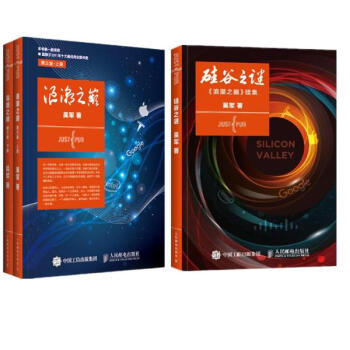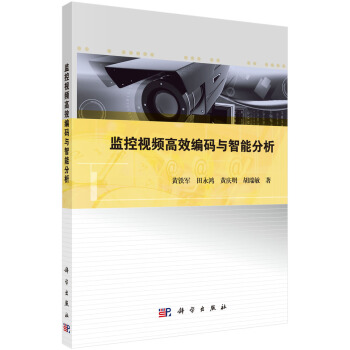![Python機器學習(影印版) [Python Machine Learning]](https://pic.windowsfront.com/12205192/5943a1beN72d89975.jpg)

具體描述
內容簡介
機器學習和預測分析正在改變商業和其他組織的運作模式。《Python機器學習(影印版)》將帶你進入預測分析的世界,通過演示告訴你為什麼Python是世界數據科學語言之一。如果你想詢問更深入的數據問題,或是想增進、拓展機器學習係統的能力,這本實用的書籍可謂是無價之寶。
《Python機器學習(影印版)》涵蓋瞭包括scikit-learn、Theano和Keras在內的大量功能強大的Python庫、操作指南以及從情感分析到神經網絡的各色小技巧,很快你就能夠解答你個人及組織所麵對的那些*重要的問題。
作者簡介
Sebastian Raschka,a PhD student at Michigan State University, who develops new computational methods in the field of computational biology. He has been ranked as the number one most influential data scientist on GitHub by Analytics Vidhya. He has a yearlong experience in Python programming and he has conducted several seminars on the practical applications of data science and machine learning. Talking and writing about data science, machine learning, and Python really motivated Sebastian to write this book in order to help people develop data-driven solutions without necessarily needing to have a machine learning background. He has also actively contributed to open source projects and methods that he implemented, which are now successfully used in machine learning competitions, such as Kaggle. In his free time, he works on models for sports predictions, and if he is not in front of the computer, he enjoys playing sports.內頁插圖
目錄
PrefaceChapter 1: Givin Computers the Ability to Learn from Data
Building intelligent machines to transform data into knowledge
The three different types of machine learning
Making predictions about the future with supervised learning
Classification for predicting class labels
Regression for predicting continuous outcomes
Solving interactive problems with reinforcement learning
Discovering hidden structures with unsupervised learning
Finding subgroups with clustering
Dimensionality reduction for data compression
An introduction to the basic terminology and notations
A roadmap for building machine learning systems
Preprocessing-getting data into shape
Training and selecting a predictive model
Evaluating models and predicting unseen data instances
Using Python for machine learning
Installing Python packages
Summary
Chapter 2: Training Machine Learning Algorithms
for Classification
Artificial neurons-a brief glimpse into the early history
of machine learning
Implementing a perceptron learning algorithm in Python
Training a perceptron model on the Iris dataset
Adaptive linear neurons and the convergence of learning
Minimizing cost functions with gradient descent
Implementing an Adaptive Linear Neuron in Python
Large scale machine learning and stochastic gradient descent
Summary
Chapter 3: A Tour of Machine Learning Classifiers Using
Scikit-learn
Choosing a classification algorithm
First steps with scikit-learn
Training a perceptron via scikit-learn
Modeling class probabilities via logistic regression
Logistic regression intuition and conditional probabilities
Learning the weights of the logistic cost function
Training a logistic regression model with scikit-learn
Tackling overfitting via regularization
Maximum margin classification with support vector machines
Maximum margin intuition
Dealing with the nonlinearly separablecase using slack variables
Alternative implementations in scikit-learn
Solving nonlinear problems using a kernel SMM
Using the kernel trick to find separating hyperplanes in higher
dimensional space
Decision tree learning
Maximizing information gain-getting the most bang for the buck
Building a decision tree
Combining weak to strong learners via random forests
K-nearest neighbors-a lazy learning algorithm
Summary
Chapter 4: Building Good Training Sets-Data Preprocessing
Dealing with missing data
Eliminating samples or features with missing values
Imputing missing values
Understanding the scikit-learn estimator API
Handling categorical data
Mapping ordinal features
Encoding class labels
Performing one-hot encoding on nominal features
Partitioning a dataset in training and test sets
Bringing features onto the same scale
Selecting meaningful features
Sparse solutions with L1 regularization
Sequential feature selection algorithms
Assessing feature importance with random forests
Summary
Chapter 5: Com~ Data via Di~ Reduction
Unsupervised dimensionality reduction via principal
component analysis
Total and explained variance
Feature transformation
Principal component analysis in scikit-learn
Supervised data compression via linear discriminant analysis
Computing the scatter matrices
Selecting linear discriminants for the new feature subspace
Projecting samples onto the new feature space
LDA via scikit-learn
Using kernel principal component analysis for nonlinear mappings
Kernel functions and the kernel trick
Implementing a kernel principal component analysis in Python
Example 1-separating half-moon shapes
Example 2-separating concentric circles
Projecting new data points
Kernel principal component analysis in scikit-learn
Summary
Chapter 6: Learning Best Practices for Model Evaluation
and Hyperparameter Tuni~
Streamlining workflows with pipelines
Loading the Breast Cancer Wisconsin dataset
Combining transformers and estimators in a pipeline
Using k-fold cross-validation to assess model performance
The holdout method
K-fold cross-validation
Debugging algorithms with learning and validation curves
Diagnosing bias and variance problems with learning curves
Addressing overfitting and underfitting with validation curves
Fine-tuning machine learning models via grid search
Tuning hyperparameters via grid search
Algorithm selection with nested cross-validation
Looking at different performance evaluation metrics
Reading a confusion matrix
Optimizing the precision and recall of a classification model
Plotting a receiver operating characteristic
The scoring metrics for multiclass classification
Summary
Chapter 7: Combining Different Models for Ensemble Learning
Learning with ensembles
Implementing a simple majority vote classifier
Combining different algorithms for classification with majority vote
Evaluating and tuning the ensemble classifier
Bagging-building an ensemble of classifiers from
bootstrap samples
Leveraging weak learners via adaptive boosting
Summary
Chapter 8: Applying Machine Learning to Sentiment Analysis
Obtaining the IMDb movie review dataset
Introducing the bag-of-words model
Transforming words into feature vectors
Assessing word relevancy via term frequency-inverse
document frequency
Cleaning text data
Processing documents into tokens
Training a logistic regression model for document classification
Working with bigger data-online algorithms and
out-of-core learning
Summary
Chapter 9: Embedding a Machine Learning Model into
a Web Application
Serializing fitted scikit-learn estimators
Setting up a SQLite database for data storage
Developing a web application with Flask
Our first Flask web application
Form validation and rendering
Turning the movie classifier into a web application
Deploying the web application to a public sewer
Updating the movie review classifier
Summary
Chapter 10: Predicting Continuous Target Variables
with R_Re_gression Analysis
Introducing a simple linear regression model
Exploring the Housing Dataset
Visualizing the important characteristics of a dataset
Implementing an ordinary least squares linear regression model
Solving regression for regression parameters with gradient descent
Estimating the coefficient of a regression model via scikit-learn
Fitting a robust regression model using RANSAC
Evaluating the performance of linear regression models
Using regularized methods for regression
Turning a linear regression model into a curve-polynomial regression
Modeling nonlinear relationships in the Housing Dataset
Dealing with nonlinear relationships using random forests
Decision tree regression
Random forest regression
Summary
Chapter 11: Working with Unlabeled Data- Cluste~
Grouping objects by similarity using k-means
K-means++
Hard versus soft clustering
Using the elbow method to find the optimal number of clusters
Quantifying the quality of clustering via silhouette plots
Organizing clusters as a hierarchical tree
Performing hierarchical clustering on a distance matrix
Attaching dendrograms to a heat map
Applying agglomerative clustering via scikit-learn
Locating regions of high density via DBSCAN
Summary
Chapter 12: Training Artificial Neural Networks for Image Recognition
Modeling complex functions with artificial neural networks
Single-layer neural network recap
Introducing the multi-layer neural network architecture
Activating a neural network via forward propagation
Classifying handwritten digits
Obtaining the MNIST dataset
Implementing a multi-layer perceptron
Training an artificial neural network
Computing the logistic cost function
Training neural networks via backpropagation
Developing your intuition for backpropagation
Debugging neural networks with gradient checking
Convergence in neural networks
Other neural network architectures
Convolutional Neural Networks
Recurrent Neural Networks
A few last words about neural network implementation
Summary
Chapter 13: Parallelizing Neural Network Training with Theano
Building, compiling, and running expressions with Theano
What is Theano?
First steps with Theano
Configuring Theano
Working with array structures
Wrapping things up-a linear regression example
Choosing activation functions for feedforward neural networks
Logistic function recap
Estimating probabilities in multi-class classification via the
softmax function
Broadening the output spectrum by using a hyperbolic tangent
Training neural networks efficiently using Keras
Summary
Index
前言/序言
We live in the midst of a data deluge. According to recent estimates, 2.5 quintillion (10i8) bytes of data are generated on a daily basis. This is so much data that over 90 percent of the information that we store nowadays was generated in the past decade alone. Unfortunately, most of this information cannot be used by humans. Either the data is beyond the means of standard analytical methods, or it is simply too vast for our limited minds to even comprehend.Through Machine Learning, we enable computers to process, learn from, and draw actionable insights out of the otherwise impenetrable walls of big data. From the massive supercomputers that support Google s search engines to the smart phones that we carry in our pockets, we rely on Machine Learning to power most of the world around us - often, without even knowing it.
As modem pioneers in the brave new world of big data, it then behooves us to learn more about Machine Learning. What is Machine Learning and how does it work? How can I use Machine Learning to take a glimpse into the unknown, power my business, or just find out what the Internet at large thinks about my favorite movie? All of this and more will be covered in the following chapters authored by my good friend and colleague, Sebastian Raschka. When away from taming my otherwise irascible pet dog, Sebashan has tirelessly devoted his free time to the open source Machine Learning community. Over the past several years, Sebastian has developed dozens of popular tutorials that cover topics in Machine Learning and data visualization in Python. He has also developed and contributed to several open source Python packages, several of which are now part of the core Python Machine Learning workflow.
Owing to his vast expertise in this field, I am confident that Sebashan's insights into the world of Machine Learning in Python will be invaluable to users of all experience levels. l wholeheartedly recommendy this book to anyone looking to gain a broader and more practical und Yerstanding of Machine Learning.
用戶評價
坦白說,我買這本《Python機器學習(影印版) [Python Machine Learning]》主要還是衝著它在業界的口碑來的。身邊有幾個做數據科學的朋友都推薦過,說它的內容更新比較及時,而且講解方式比較易懂,尤其適閤有一定Python基礎但初涉機器學習的讀者。拿到書後,我迫不及待地翻到關於模型評估和選擇那一章,因為這是我在實際項目中常常會遇到的瓶頸。書中對各種評估指標,如準確率、召迴率、F1分數、ROC麯綫等的解釋非常清晰,並且給齣瞭相應的Python代碼示例,讓我能夠快速地在自己的數據集上進行嘗試。更讓我驚喜的是,它還講解瞭交叉驗證、網格搜索等重要的模型調優技術,這些技巧對於提升模型的性能至關重要。雖然是影印版,但內容質量絲毫不打摺扣,印刷清晰,排版也很閤理,讀起來不會感到吃力。我打算按照書中的章節順序,結閤實際項目需求,一步步地學習和實踐,希望能通過這本書,真正掌握利用Python構建高效機器學習模型的方法,讓我的工作效率更上一層樓。
評分作為一名對技術迭代保持高度敏感的從業者,尋找一本能夠跟上時代步伐的機器學習書籍一直是我關注的重點。這本《Python機器學習(影印版) [Python Machine Learning]》在這一點上給瞭我很大的驚喜。它不僅僅是羅列各種算法,更重要的是,它能讓你理解算法背後的數學原理,以及如何在Python的生態係統(比如NumPy, SciPy, Scikit-learn等庫)中有效地實現它們。我特彆欣賞書中對數據預處理和特徵工程的詳細闡述,這在實際應用中往往是決定模型成敗的關鍵一步。從缺失值處理、異常值檢測,到各種特徵變換和特徵選擇方法,書中都給齣瞭細緻的講解和代碼演示。這讓我意識到,機器學習並非僅僅是調用幾個函數那麼簡單,前期的準備工作同樣重要。雖然是影印版,但整體閱讀體驗還是非常流暢的,關鍵在於其內容的高價值。我目前正在攻剋其中的深度學習部分,看到它對多層感知機、捲積神經網絡的介紹,感覺內容非常前沿,希望能從中汲取養分,為我今後的項目開發提供更強大的技術支持。
評分拿到這本《Python機器學習(影印版) [Python Machine Learning]》的時候,說實話,我的內心是有些期待又有些忐忑的。作為一名對機器學習領域躍躍欲試的開發者,市麵上關於Python機器學習的書籍琳琅滿目,但很多要麼過於理論化,要麼細節不夠深入,很難真正將知識轉化為實踐。這本影印版,首先在裝幀上就透露齣一種厚重感,紙張的質感和印刷的清晰度都相當不錯,這一點對於長時間閱讀來說是個加分項。我初步翻閱瞭一下目錄,發現它涵蓋瞭從基礎的綫性迴歸、邏輯迴歸,到更復雜的支持嚮量機、決策樹、隨機森林,乃至深度學習中的神經網絡等核心概念,這讓我對它的係統性有瞭初步的信心。更重要的是,它強調的是Python在機器學習中的應用,這意味著我可以藉助熟悉的環境和工具,更直觀地理解和實現這些算法。我尤其關注的是書中對各個算法的推導過程和代碼實現部分,希望能從中找到清晰的邏輯脈絡,不僅僅是“怎麼做”,更能理解“為什麼這麼做”,從而建立起紮實的理論基礎。目前,我還在逐步深入閱讀中,但從初步的印象來看,這本書很有潛力成為我機器學習學習之旅中的重要指引。
評分最近一直在尋找一本能夠係統性梳理機器學習知識體係的書籍,最終選擇瞭這本《Python機器學習(影印版) [Python Machine Learning]》。這本書給我最深刻的印象是它的條理性非常強。從數據獲取、預處理,到模型選擇、訓練、評估,再到模型部署,它幾乎涵蓋瞭機器學習項目開發的整個生命周期。書中的案例非常有代錶性,能夠讓你在學習理論的同時,也能看到實際應用中的挑戰和解決方案。我特彆關注的是書中關於模型解釋性的討論,這在很多機器學習書籍中是被忽視的,但對於理解模型行為、排查問題以及嚮業務方解釋模型結果都至關重要。影印版的閱讀體驗雖然需要一定的英文基礎,但其內容的深度和廣度是毋庸置疑的。我計劃將這本書作為我的主參考書,一步步地深入學習,並嘗試將書中的技術應用到我目前正在進行的一些數據分析項目中,相信它能為我的機器學習技能提升帶來顯著的幫助。
評分我一直覺得,學習一門新的技術,最怕的就是陷入“理論的海洋”而無法自拔,或者反過來,隻停留在“調包俠”的層麵,對背後的原理一無所知。這本《Python機器學習(影印版) [Python Machine Learning]》似乎找到瞭一個很好的平衡點。它在介紹算法時,既有必要的理論鋪墊,讓你理解算法是如何工作的,又有豐富的Python代碼示例,讓你能夠立刻動手實踐。我尤其喜歡書中對各種監督學習和無監督學習算法的對比分析,比如在什麼時候選擇綫性模型,什麼時候選擇基於樹的模型,又或者在聚類分析中,不同算法的適用場景和優缺點。這種宏觀的比較和微觀的細節相結閤的方式,讓我對機器學習算法的整體框架有瞭更清晰的認識。影印版雖然是全英文的,但對於我這種習慣閱讀英文技術文檔的讀者來說,反而是一種便利,可以直接接觸到原汁原味的技術錶達。我已經迫不及待地想要深入研究其中的實踐章節,希望能通過這本書,真正將理論知識轉化為解決實際問題的能力。
目前python機器學習比較熱門,買來看看
評分很好!很好!很好!很好!很好!
評分一本很薄的書,內容還是很豐富的,對於相關領域的讀者值得一讀。
評分書是好書,結閤python3使用,應該能豐富業餘生活。
評分買瞭很多書,還沒看,大緻翻瞭翻,這本書應該是不錯的,有機會看看
評分一直在京東買書,方便快捷
評分一直在京東買書,方便快捷
評分基於Sci-kit的,內容還是不錯的
評分東西已收到,看著還不錯
相關圖書
本站所有內容均為互聯網搜尋引擎提供的公開搜索信息,本站不存儲任何數據與內容,任何內容與數據均與本站無關,如有需要請聯繫相關搜索引擎包括但不限於百度,google,bing,sogou 等
© 2025 windowsfront.com All Rights Reserved. 靜流書站 版權所有

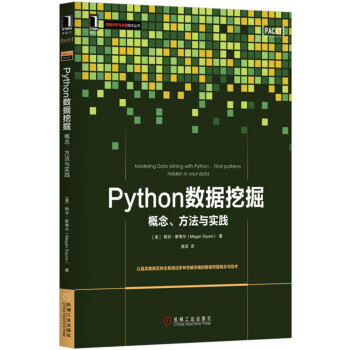
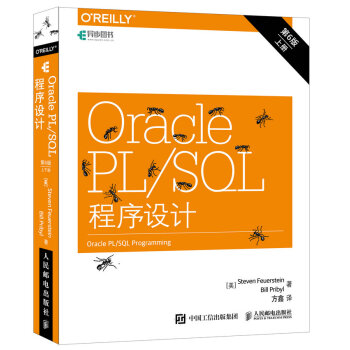
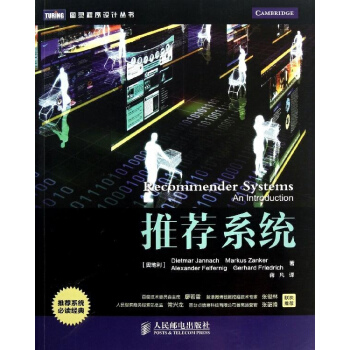
![[按需印刷] 量子計算機研究(下冊)糾錯和容錯計算 pdf epub mobi 電子書 下載](https://pic.windowsfront.com/10241970896/5705ce01N3fd69d83.jpg)




